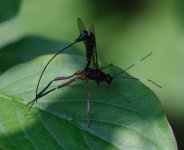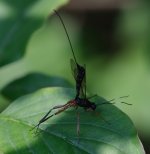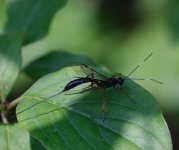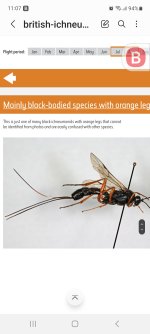DoghouseRiley
Well-known member
Hi All
I saw a sabre wasp recently, without the white markings along it's side.
After a bit of searching I found Rhyssella approximator, this looks like a good match for my wasp.
Could someone please take a look and ID for me?
The only question is the white bands around the antenae. Are these variable?
Yours, Gareth
I saw a sabre wasp recently, without the white markings along it's side.
After a bit of searching I found Rhyssella approximator, this looks like a good match for my wasp.
Could someone please take a look and ID for me?
The only question is the white bands around the antenae. Are these variable?
Yours, Gareth








